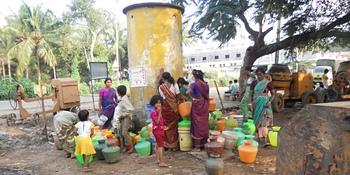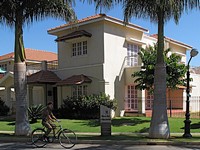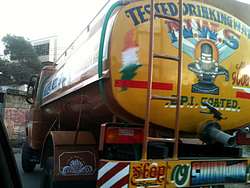SEI project, presented at the Bangalore World Water Summit, maps ‘urban metabolism’ to support planning for sustainability.

Rapid population growth and economic activity in Indian cities have overwhelmed their ecological support base, leading to chronic shortages in electricity, water and road space while polluting the physical environment.
Aiming to better understand these dynamics – and help stakeholders grapple with them – SEI last year launched the project Urban Metabolic Mapping: Securing the Biophysical Foundation of Indian Cities, with Bangalore as the initial focus.
The idea, says project leader (and Bangalore native) Vishal Mehta, is to look at the city as a “living organism” to show how economic, social and demographic characteristics drive consumption.
“Much like a living organism consumes resources and produces waste, a city also consumes resources, its waste re-entering the natural ecosystem,” he says. “What are the limits to our natural resource base? What is the impact of the city’s water consumption and waste-water patterns on the future availability of safe and adequate water? How does a city’s extraction of water resources impact other communities in the larger river basin? These are central questions to assessing sustainable management of resources.”

Bangalore has been one of India’s great success stories, Mehta notes, booming as a high-tech capital. But this boom has also brought a surge in population: a 3 million gain in the last 10 years, to 8.5 million – three times the previous two decades’ growth. The local utilities and infrastructure can’t keep up with the growing demand for resources and services, resulting in disruptions and unmet needs.
Bangalore’s water utility, which gets most of its water from the Cauvery River, 100km away, has kept expanding the supply, but much of the city’s growth has on what used to be the outskirts of the city; in some wards in outlying areas, the population has tripled or quadrupled in the last 10 years.
The water supply infrastructure can’t support the new population, Mehta says, so people have to find ways to cope: private bore wells, packaged water, and tankers are the most common alternatives. This is much harder to plan for than direct water service through the utility.

“At the same time,” Mehta says, “increasing consumption without careful regard to the resource limits and to environmental impacts can quickly lead to an unsustainable city, or a city that sustains itself in the short term at the expense of others, and at the expense of its own long-term future.”
Local connections
Along with SEI, the project team includes ecological economists and environmental scientists from the Indian Institute of Management (IIM) and the Indian Institute of Science (ISc), both in Bangalore. They are comparing consumption data with social, economic and demographic information, and evaluating current and future development scenarios in terms of economic efficiency, social equity and environmental sustainability.
Throughout the project, the partners are also reaching out to key stakeholders to facilitate civic discourse on the nature and impacts of various development pathways of Indian cities, and engaging civic bodies at the city, state and national levels.
On 2 February, Mehta and Eric Kemp-Benedict, also of SEI’s U.S. Centre, presented their urban sustainability framework at the Bangalore World Water Summit. The following day, SEI and IIM brought together a stakeholder group consisting of government agencies, academic scientists and NGOs in a formal participatory planning exercise called “Imagining Bangalore: A scenarios workshop on the city’s long-term sustainability” with the goal of introducing formal methods to participatory planning and decision-making.
The project continues. See early mapping results for Bangalore.
Design and development by Soapbox.
